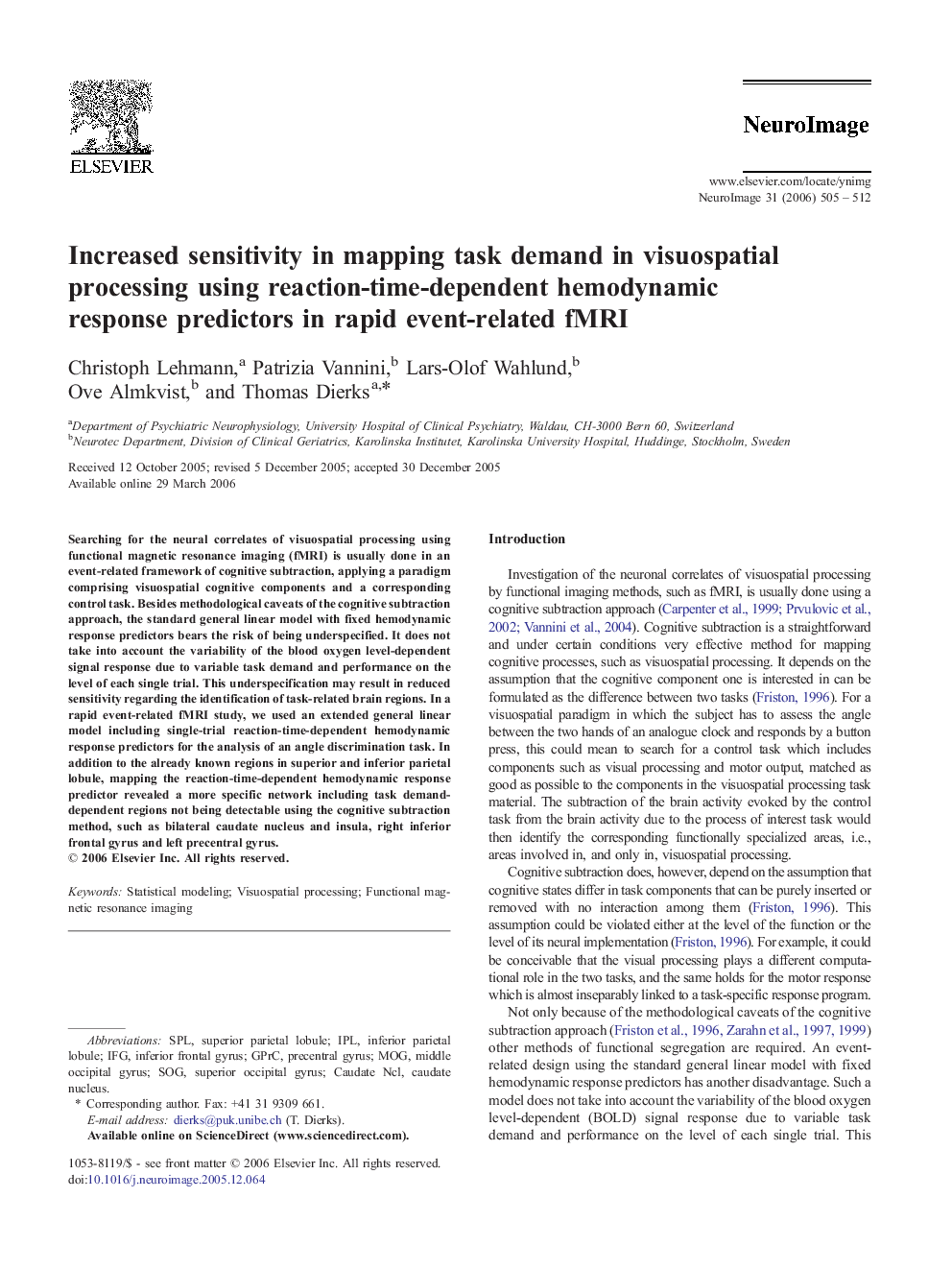| Article ID | Journal | Published Year | Pages | File Type |
|---|---|---|---|---|
| 3073720 | NeuroImage | 2006 | 8 Pages |
Searching for the neural correlates of visuospatial processing using functional magnetic resonance imaging (fMRI) is usually done in an event-related framework of cognitive subtraction, applying a paradigm comprising visuospatial cognitive components and a corresponding control task. Besides methodological caveats of the cognitive subtraction approach, the standard general linear model with fixed hemodynamic response predictors bears the risk of being underspecified. It does not take into account the variability of the blood oxygen level-dependent signal response due to variable task demand and performance on the level of each single trial. This underspecification may result in reduced sensitivity regarding the identification of task-related brain regions. In a rapid event-related fMRI study, we used an extended general linear model including single-trial reaction-time-dependent hemodynamic response predictors for the analysis of an angle discrimination task. In addition to the already known regions in superior and inferior parietal lobule, mapping the reaction-time-dependent hemodynamic response predictor revealed a more specific network including task demand-dependent regions not being detectable using the cognitive subtraction method, such as bilateral caudate nucleus and insula, right inferior frontal gyrus and left precentral gyrus.
